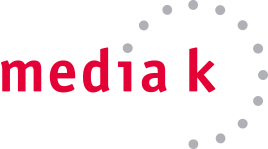
THERAPY 2.0 – Counselling and Therapeutic Interactions with Digital Natives
www.ecounseling4youth.eu , www.facebook.com/Ecounselling4youth , #ecounselling4youth
The integration of Information and Communication Technologies (ICT) in counselling and therapy is yet an incomplete process. The only activities pursued up to now in this area have been related in most of the cases to applications of personal computers for emails and internet tools. Counsellors and therapists still rely almost exclusively on traditional talking and interaction with their clients (“the couch”).
While this approach may still lead to satisfactory results with adults, especially older persons, there is a growing danger that the younger generation, the “digital natives”, may not be reached to the full extent. They have a fundamentally different communication behaviour that makes the various Web 2.0 communication tools (Facebook, Twitter, Whatsup, Skype, etc.) to a daily extension, or complement, of their oral communication. Therefore, any counselling and therapy for the younger population that seeks to be successful should eventually include ICT based activities between the expert and the client.
The Therapy 2.0 project raised the awareness of the potentials of ICT based approaches in therapeutic and counselling processes. It produced concrete and tangible results that can be incorporated immediately into counselling and therapeutic practice, and support practitioners to make sure that the lack of full visual or verbal communication that occurs over video or email does not negatively affect how the message of the therapy is received by the client. It provides a practical guide to the different ways in which technology can be used in therapeutic work. It gives best practice examples that go beyond e-mail and internet chat, video-link and stand-alone software packages, and includes mobile applications for smartphones. In addition, it discusses vital ethical, theoretical, and practical considerations for practitioners that include safety issues.
Such approach is also needed with refugees, wherewith Therapy 2.0 tools, counsellors are able to reach also completely new target groups, i.e. young and / or unaccompanied refugee minors. Most of them, specifically young women, have made traumatic experiences and many of them suffer from post-traumatic stress disorder in various degrees. Their most important communication tools are smartphones. Given the fact that their language levels of the host country language are often still poor, conventional “speech counselling” needs a complementary approach that uses the media where these young people are at home.
Our project brochure offers information about the project and results.

The most important outputs of the project were
- Therapy 2.0 Guidelines enable social, pedagogic and psychologic counsellors, advisers, and therapists to transfer their face-to-face skills to the online environment, and to deliver counselling or therapy services via technology. They explain the integration of mobile devices in the counselling and therapeutic process, considering how their technological features support client activities like behaviour assessment and informal mobile learning. Another important aspect is how to approach the sociocultural levels of “digital natives” and how to make sure that they accept the therapist’s or counsellor‘s advice.
- Therapy 2.0 materials as a complement to the Guidelines offer a modular range of awareness raising, training, and demonstration materials for therapists and counsellors
- The Therapy 2.0 e-platform supports the delivery of all materials of the project and supports online interactive tools such as forums, blogs, social networking applications and chat rooms, while it also is combined with the project’s website. The online platform can be used both as a means of disseminating the project results and as a virtual learning environment.
- Mobile applications for counselling and therapy processes that provide greater validity since data are collected in the client’s natural environment. The apps support the delivery of a set of counselling and therapy actions that are regarded as suitable for transfer to mobile devices. They are used as virtual information and learning environment as well as a means of disseminating the project.
The German project brochure is available here.

The partnership comprised a multi-disciplinary team of mental health and social counselling organisations, education and pedagogic expert partners as well as ICT and multimedia specialists:
- media k GmbH, Germany (coordinator)
- Friedrich-Alexander-Universität Erlangen Nürnberg, Innovation in Learning Institute, Germany
- INTEGRA INSTITUT, Institut za razvoj clovekovih potentialov, Velenja/Slovenia
- SVEUCILISTE U RIJECI, MEDICINSKI FAKULTET, Rijeka/Croatia
- ICELAND ACADEMY OF THE ARTS, Reykjavik/Iceland
- Wissenschaftsinitiative Niederösterreich, Würnitz/Austria
- INSTITUTO POLITECNICO DO PORTO, Porto/Portugal
- GUNET AKADIMAIKO DIADIKTYO, Athen / Greece
The project developed guidelines, training material, and best practice approaches in localised solutions for the 7 partner countries, with the ultimate objective to integrate ICT based counselling into vocational education for psychologists, therapists, and counsellors.
Contact for further information: Dr. Karin Drda-Kühn

Project number: 2016-1-DE02-KA202-003245

